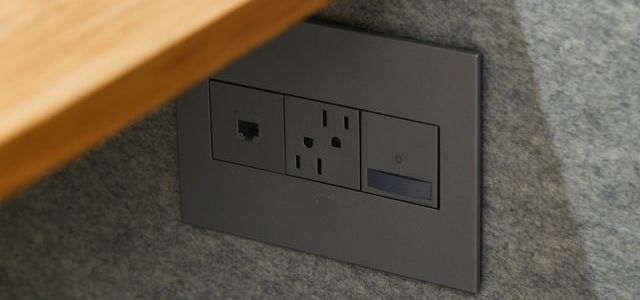How many plug sockets should there be in a kitchen? It’s a simple question and you might think it never needs answering again, but I beg to differ. Sometimes you might have that “eureka” moment, where you make a discovery that changes everything. Or perhaps something might have changed in your house (e.g., new furniture) and you want to check what’s changed or could change regarding how many plug sockets in a kitchen.
Do you want to know how many plug sockets are needed in a kitchen? In this post, we will look at different areas of the kitchen and see how many plug sockets should go into the various areas and consider if having enough plug sockets is important for your kitchen. Does your kitchen need more plug sockets? Find out below.
Table of Contents
Plug sockets in kitchen
How many plug sockets do you need in your kitchen? It’s a question that we’re often asked by people who are renovating or building a kitchen. In this article, we reveal the ideal minimum number of plug sockets required, as well as how to go about installing them.
The minimum number of plug sockets required
There is no statutory requirement for how many power outlets (plug sockets) there must be in a kitchen. However, the Institution of Engineering and Technology (IET) have produced guidance on the number of plug sockets that should be installed. In a kitchen, IET recommends that you have at least 3 double power points (6 individual sockets). The power points should be located:
- Above the worktop near to where small appliances are used.
- Near to the sink.
- Above any fixed units that may obscure sockets such as ovens/hobs or refrigerators.
Why are so many plug sockets needed in a kitchen?
There are often many more sockets in a kitchen than there are in any other room. This is because of the high number of appliances that need to be used in the kitchen.Many of these appliances will not be used at the same time. Therefore, it is important that there are enough plug sockets for each appliance to have its own.If it is not possible to do this, then multi-socket extension leads should be used
There is also a greater need for plug sockets in a kitchen because of the number of different appliances that are needed for cooking and cleaning up afterwards. Many of these will run on electricity, so they will need power in order to work correctly.
What types of appliances would need to be plugged into kitchen sockets?
How many plug sockets should you have in a kitchen?
There is no specific number, but you can figure out how many plug sockets you need by listing the appliances that will use them.What types of appliances would need to be plugged into kitchen sockets?The list of appliances that may require plug sockets in a kitchen includes:
- Refrigerator
- Freezer
- Kettle
- Microwave oven
- Toaster or toaster oven
- Food processor or blender
- Coffee grinder or coffee maker
- Dishwasher
Where to put plug sockets in a kitchen?
Think about where you need plug sockets for appliances, and try to plan the sockets near to these. That way, you don’t have to rely on extension leads which can be a trip hazard.
The main areas where you need plug sockets are:
- Near the sink – if you’re having an electric hob and oven, you may not need to use a kettle very often. So put one socket near the sink, and another either near your fridge or dishwasher. This is because water and electricity don’t mix!
- Near the oven – if your hob can be powered from a standard socket (as opposed to a hardwired) then make sure there is a socket in easy reach of it.
- In breakfast bars – if you have a breakfast bar, think about putting some sockets under it so that they can be used by people sitting at the bar.
What about dishwashers and washing machines?
The number of power points required in a kitchen depends on the appliances you have and how you use them. If you don’t do most of your cooking at home, then you may only need a few power points for the microwave and kettle. But if you love whipping up gourmet dishes for your friends and family, then you’ll probably need more power points to accommodate all your small appliances like food processors, blenders, toasters, coffee machines and stand mixers – not to mention the oven, cooktop, dishwasher and fridge.
So how many plug sockets are best for your Kitchen
There are actually a lot more things to consider for you to get the number of plugs you need for your kitchen. You will first have to determine how many square feet of space you have. You should also consider the number of appliances you are going to plug in, and if any of them are a larger appliance, like a microwave or dishwasher, then you will need two or even three separate walls plug close together so that it won’t be a huge hassle when moving it around.
It might take some planning and figuring out on your part, but if you can get the right number of electrical outlets for your kitchen counters, then everyone will thank you for it later on!
In the end, the number of outlets you will need to install depends on your individual needs. If you have a lot of electrical appliances, it will be worthwhile to have more than three outlets put in. A quick internet search will help you find out how many plug sockets are recommended for a kitchen with a specific number of appliances.
The number of electrical appliances in your kitchen should not be the only deciding factor when deciding on how many wall outlets to install, but it should play an important part.
